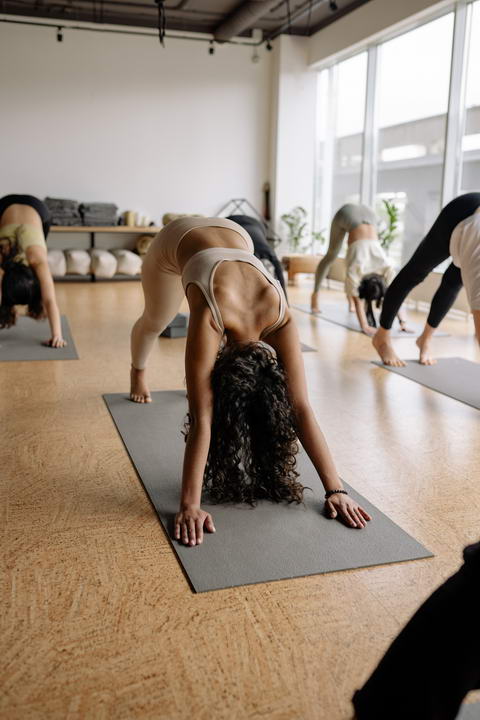Yoga for Health Problems
This article explores how good is yoga for health problems, highlighting specific practices and their impact on improving overall well-being. Yoga, an age-old practice with origins in India, has emerged as a powerful tool for managing and alleviating various health problems. By combining physical postures, breathing exercises, and meditation, yoga offers a holistic approach to addressing both physical and mental ailments. From chronic conditions like arthritis and hypertension to mental health issues such as anxiety and depression, yoga’s therapeutic benefits are increasingly recognized by the medical community.
Explore Meditation Retreats & Wellness Retreats
Explore Yoga Retreats with Tejomaia.com
Is yoga good for weight loss?
While yoga alone may not lead to significant weight loss in the same way as high-intensity cardio mindfulness, which can help individuals become more attuned to their body’s hunger and fullness cues, leading to healthier eating habits. Additionally, certain styles of yoga, such as Vinyasa or Power yoga, can provide a cardiovascular workout that burns calories and builds muscle, contributing to weight loss over time. Moreover, yoga reduces stress, which can be a significant factor in weight gain, as stress often leads to emotional eating and hormonal imbalances. By addressing both the physical and psychological aspects of weight management, yoga can support individuals in achieving and maintaining a healthy weight.
Is yoga good for back pain?
Yes, yoga can be highly effective for relieving back pain and improving overall spinal health. Many yoga poses focus on strengthening and stretching the muscles that support the spine, alleviating tension and promoting proper alignment. Poses such as Cat-Cow, Child’s Pose, and Downward Facing Dog gently stretch the back muscles and promote spinal flexibility. Additionally, poses like Bridge Pose and Cobra Pose help strengthen the back muscles while also opening up the chest and shoulders. Yoga also emphasizes core strength, which is crucial for supporting the spine and maintaining good posture. Moreover, the focus on breath awareness and relaxation techniques in yoga can help reduce stress and tension, which are often contributing factors to back pain. However, it’s essential to practice yoga mindfully and listen to your body, avoiding any poses or movements that exacerbate your pain. Consulting with a healthcare professional or experienced yoga instructor can also provide guidance on suitable poses and modifications for your specific condition. Overall, a consistent yoga practice tailored to your needs and abilities can play a significant role in managing and preventing back pain, promoting spinal health, and enhancing overall well-being.
Is yoga good for digestion?
Yes, yoga can be beneficial for improving digestion. Certain yoga poses, breathing techniques, and mindful practices can help stimulate digestion, relieve digestive discomfort, and promote overall digestive health. Poses that involve gentle twists, such as seated spinal twists or supine twists, can help massage the abdominal organs, improve circulation, and stimulate the digestive tract. Additionally, poses that compress or massage the abdomen, such as forward bends or gentle belly presses, may help alleviate bloating and gas. Breathing exercises, such as diaphragmatic breathing or Kapalabhati (skull-shining breath), can also stimulate digestion by increasing oxygen flow to the digestive organs and promoting relaxation. Moreover, practicing yoga regularly can help reduce stress, which is known to negatively impact digestion, by activating the parasympathetic nervous system, also known as the “rest and digest” response. By combining physical movement, breathwork, and relaxation, yoga offers a holistic approach to supporting digestive function and overall well-being.
Is yoga good for arthritis?
Yes, yoga can be beneficial for arthritis. While it’s essential to consult with a healthcare provider before starting any new exercise regimen, many people with arthritis find that gentle yoga practices can help alleviate symptoms and improve overall joint health. Yoga offers a combination of gentle stretching, strengthening exercises, and relaxation techniques that can help reduce pain, stiffness, and inflammation associated with arthritis. Certain yoga poses can increase flexibility, improve joint mobility, and strengthen the muscles surrounding the affected joints, providing support and stability. Additionally, yoga promotes relaxation and stress reduction, which can help manage arthritis-related stress and improve overall well-being. It’s essential to choose yoga practices and poses that are suitable for individual needs and limitations, and to practice with mindfulness and awareness of any discomfort or strain. With proper guidance and modification, yoga can be a valuable tool for managing arthritis symptoms and enhancing quality of life.
Is yoga good for flexibility?
Certainly! Yoga is highly beneficial for enhancing flexibility. Through a combination of poses, stretches, and controlled breathing, yoga helps to elongate muscles and increase joint mobility. Over time, consistent practice can lead to significant improvements in flexibility, making everyday movements easier and reducing the risk of injury. Additionally, the focus on relaxation and mindfulness in yoga can help alleviate tension in the body, further supporting flexibility gains. Whether you’re a beginner or experienced practitioner, incorporating yoga into your routine can contribute to greater overall flexibility and well-being.
Is yoga good for runners?
Absolutely! Yoga can be incredibly beneficial for runners. It helps improve flexibility, balance, strength, and mental focus, all of which are essential for running performance and injury prevention. Yoga poses target key muscle groups used in running, such as the hamstrings, calves, hips, and core, helping to increase flexibility and reduce tightness. Additionally, yoga promotes proper alignment and body awareness, which can help runners maintain good form and prevent overuse injuries. The focus on breath control in yoga can also enhance lung capacity and oxygen efficiency, supporting endurance during runs. Moreover, yoga provides an opportunity for runners to practice relaxation techniques, reduce stress, and promote faster recovery between workouts. Incorporating yoga into a runner’s training regimen can lead to improved performance, reduced risk of injury, and greater overall well-being.

Is yoga good to burn calories?
Yes, yoga can be effective for burning calories, although the amount burned varies depending on the type and intensity of the practice. Vigorous styles like Vinyasa, Power Yoga, and Ashtanga involve dynamic sequences and continuous movement, which can elevate the heart rate and lead to significant calorie burn. These styles not only build strength and flexibility but also provide a cardiovascular workout. Even gentler forms of yoga, such as Hatha or Yin, while not as calorie-intensive, can still contribute to weight management by reducing stress and promoting mindfulness, which can help control overeating. Overall, incorporating yoga into your fitness routine can support calorie burning and enhance overall health.
Explore Meditation Retreats & Wellness Retreats
Explore Yoga Retreats with Tejomaia.com




